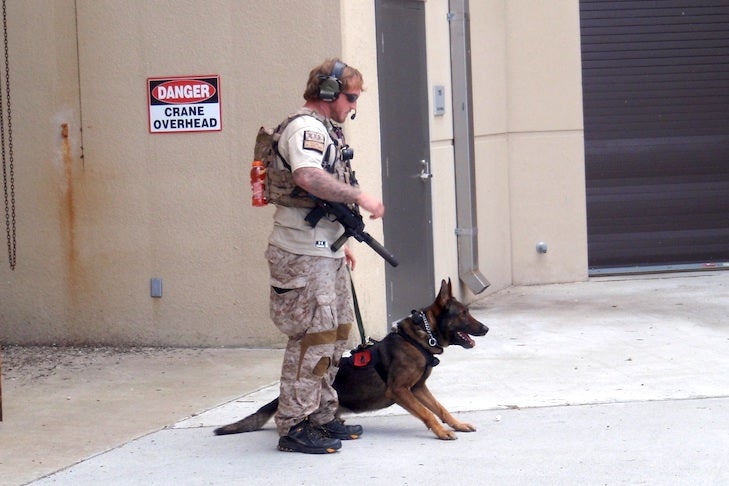
“No Ordinary Dog: My Partner from the SEAL Teams to the bin Laden Raid,” by Will Chesney with Joe Layden. St. Martin’s Press. $28.99 ($19.23 on Amazon).
While this title is right on target, an equally appropriate one would be “Cheese & Cairo.” While it’s not a sandwich, it would capture the story of two soulmates.
It probably wouldn’t sell as many books, but make no mistake about it, this resonating adventure of THE dog on the famous attack on Osama bin Laden’s compound in Pakistan in 2011 is as much about Will Chesney (nickname Cheese), Cairo’s adroit handler, as the finely tuned 70-pound Belgian Malinois that became a national celebrity overnight.
Packed with energy and promise throughout – and a mix of psychological body blows from one chapter to the next – “No Ordinary Dog” is a window into the brittle dynamics of one dog team’s interactions in and out of the Middle East war zone.
Beyond Friendship
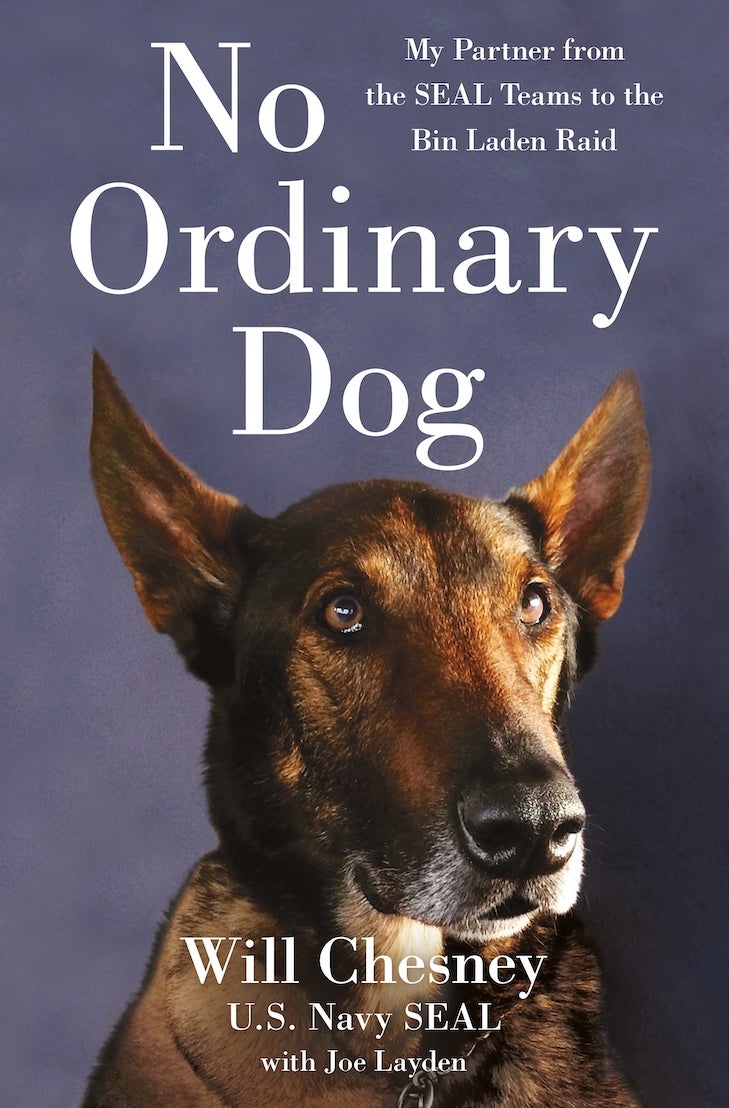
In the Introduction, Chesney establishes, “Cairo was my dog. And I was his dad. I don’t use that term euphemistically. The relationship between a handler and a canine SEAL is profound and intimate. It goes well beyond friendship and the usual ties that bind man to dog. The training is experiential and all-encompassing, a round-the-clock immersion designed to foster not just expertise but an attachment of uncommon depth and complexity.”
From the moment Chesney first met Cairo until he was forced to let go a decade later when cancer felled the spirited fighting machine, this is a special union, sometimes separated by thousands of miles, and other occasions a few feet.
Chesney’s focus is directed on the “exhaustive and intricate training” served up in fine-tuning Cairo’s soldiering capabilities that were put to the test in a wide mix of challenges from tiny villages to mountainous hideaways. Yes, the attack on bin Laden’s compound gets plenty of attention, too, but this exhilarating narrative is about the journey, not simply that renowned mission.
And, oh, by the way, Chesney notes in the Introduction, “My hope is that this will not be quite like anything you’ve read before.” On that front, this delivers.
SEALS or Nothing
The young East Texan’s dream was to become a Navy SEAL and he put that into motion as an 18-year-old in 2002. “For me, it was the SEALs or nothing,” he emphasizes. The odds weren’t exactly in his favor as only 20 percent succeed. He adds, “There is no room for the cowboy or the rogue warrior in this scenario. There is only professionalism and 100 percent commitment.”
Upon following Chesney through the demanding SEAL training regimen called BUD/S, the reader is left with a strong appreciation for the talents and commitments of its select members. Of the 168 men in his class, only 22 reached the finish line in this physical/psychological test Chesney characterizes as “an utterly merciless, non-stop, six-month beatdown.”
Whether you’re deep underwater in a dive suit or ascending a wall, the author emphasizes “the SEALs want men who can handle adversity but not let their emotions get in the way of completing a job.”
Because SEALs spend years of training prior to deployment a big chunk of this volume focuses on that facet of the job. Hence you won’t even meet Cairo until you are several chapters into the read.
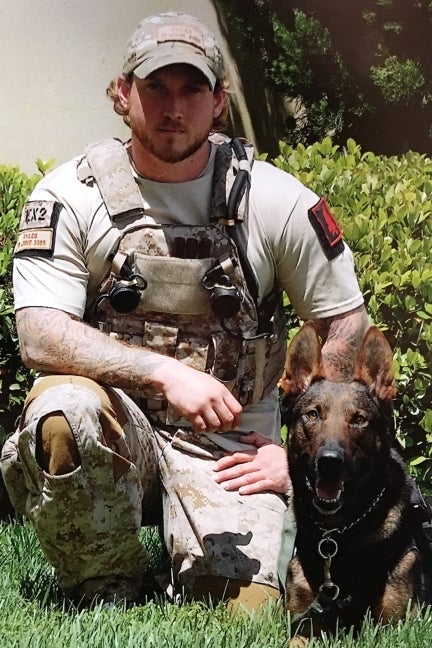
Fighting and Tracking Machines
It was not until 2006 – remember, he joined the Navy in 2002 — that Chesney was introduced to dogs in warfare during a training demonstration in Kentucky, after deployments to South America and Iraq. As a youngster,
Chesney’s family-owned dogs but he had little familiarity with their military prowess.
That demo had two men and a Belgian Malinois, a breed Chesney was totally unfamiliar with but left him with a wow factor!
A second Iraq deployment – this one for six months – put Chesney in the crosshairs of general combat and removing high-value targets – but he was not yet a member of a SEAL team. With refreshing bluntness and candor, the reader is taken inside the unit with the feel of being on the front line.
Upon returning stateside, he was finally assigned to a SEAL Training Team, from which he graduated in six months. Training provided endless opportunities, he writes, for the new guys to find their niches. He liked dogs, which sent him on a new pathway and appreciation for their capabilities in conflict.
“It always seemed to me that the bad guys feared our dogs more than they feared us,” he says. “And maybe with good reason.”
Conversely, he notes that one of these “fighting and tracking machines” saving a teammate’s life in a wide range of ways “wasn’t that rare of an occurrence.”
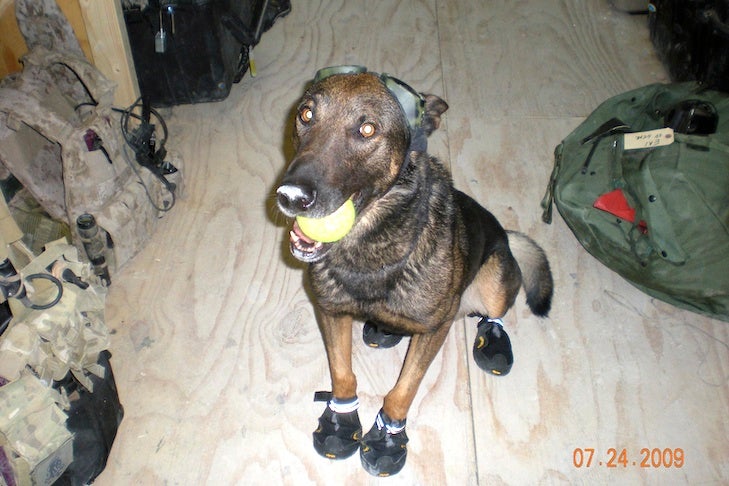
Becoming a Military Dog Handler
Chesney’s decision to go for it – and become a dog handler – came about halfway through a 2008 deployment in Afghanistan in which his squadron was accompanied by two working dogs. Quickly, he recognized that the handler role required managing and caring for his dog while serving as a shooter. “It was an extraordinarily demanding and complicated job,” he notes. In essence two jobs in one.
Chesney details the procurement process of these combat assault dogs – most are products of Schutzhund in Germany or KNPV (Koninklijke Nederlandse Politiehonden Vereniging) in the Netherlands and 2-to 3-years-old when purchased. “They are strong, fit and ready to be molded into a unique asset,” he writes. “The purest and most reliable test is one that measures not just instinct or tracking and scent-detection ability, but something deeper – the dog’s heart.”
Chesney’s eventual partner, Cairo, was a Belgian Malinois whose price tag was approximately $10,000.
Cairo was not this SEAL’s first choice when they met in 2008 but their love affair and nimble teamwork grows throughout this absorbing volume. Quickly, the author establishes, “In a lot of ways, I felt like he could teach me as much as I could teach him.” That catalog of challenges included scent detection, bite work, command response, desensitization to sound and physical training.
Finally, it was time to put the hard work to practice. Their first deployment together was in Afghanistan in June 2009, a four-month assignment.
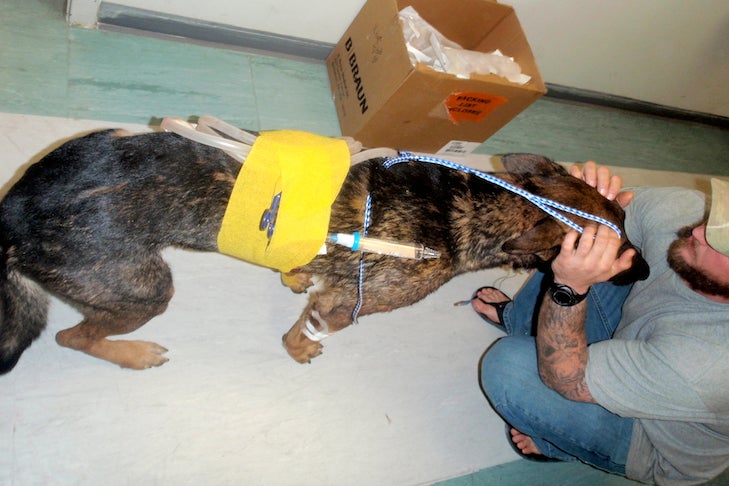
Most Secretive and Famous Mission Ever
One of those missions included searching for a missing American soldier, Private Bowe Bergdahl, who was captured by the Taliban. His departure from an American base in late June 2009 prompted headlines nationwide. Was he deserting or captured while on patrol? Basically two months of Chesney’s stay revolved around bringing Bergdahl home, which proved unsuccessful.
Surrounded by frustration, add a psychological grenade to the equation, when Cairo sustained life-threatening injuries to the chest and a leg following a firefight with insurgents. Fortunately, he was treated quickly in the field by a former combat medic before being flown to Bagram Airfield, the closest military base with a veterinary staff.
Several chapters center on Chesney’s return to his unit and the 4-year-old Cairo’s trip to Lackland Air Force Base, Texas, home of the Department of Defense Military Working Dog Program and the premier canine medical care and rehabilitation facilities, for treatment. More than two months passed before the pair would be reunited.
Their future together remained uncertain, however, since Chesney had been a dog handler for two deployments and was ready to become a “shooter” again. Cairo was almost six at that point (March 2011). The Navy eventually determined that the re-energized Cairo would not be retired, rather become a spare dog, ready for his next call.
Well, surprise! Late that month, Chesney’s team was assigned to a dive training trip to Florida, a chance for him to sharpen his water skills, then on to jumpmaster school in Arizona. On the second day in Arizona, he suddenly received orders to return home to Virginia – with no explanation – and to pick up Cairo upon arrival.
This set in motion what was to become the Navy SEALs’ most secretive and famous mission ever, for which Chesney serves up an intrepid play-by-play of details. You know how it ended but you will find yourself glued to his riveting, first-hand account which left Cairo in the national spotlight for months.
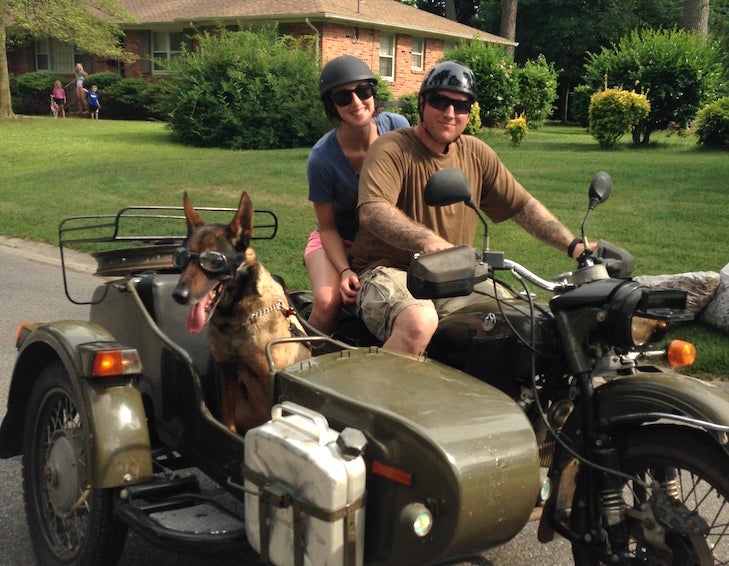
Does Time Heal All Wounds?
But this story doesn’t end on that high note. Far from it.
Chesney’s personal demons were everywhere in the brittle landscape ahead where he battled PTSD (Post Traumatic Stress Disorder and TBI (Traumatic Brain Injury) and unable to find a medical treatment to relieve either until . . .
“You know what did help? Stopping by the kennel to play with Cairo (then 8),” he says. “I know that probably sounds crazy, but it’s the absolute truth.”
Time sometimes heals wounds and as this rich narrative heads to the finish line, the reader is fulfilled with a mixed bag of candor and passion that will test your emotions.
Were these two soulmates reunited in retirement? Did Chesney overcome those medical disorders? Did Cairo have a healthy post-service life?
Rest assured, “No Ordinary Dog” will provide those answers.

